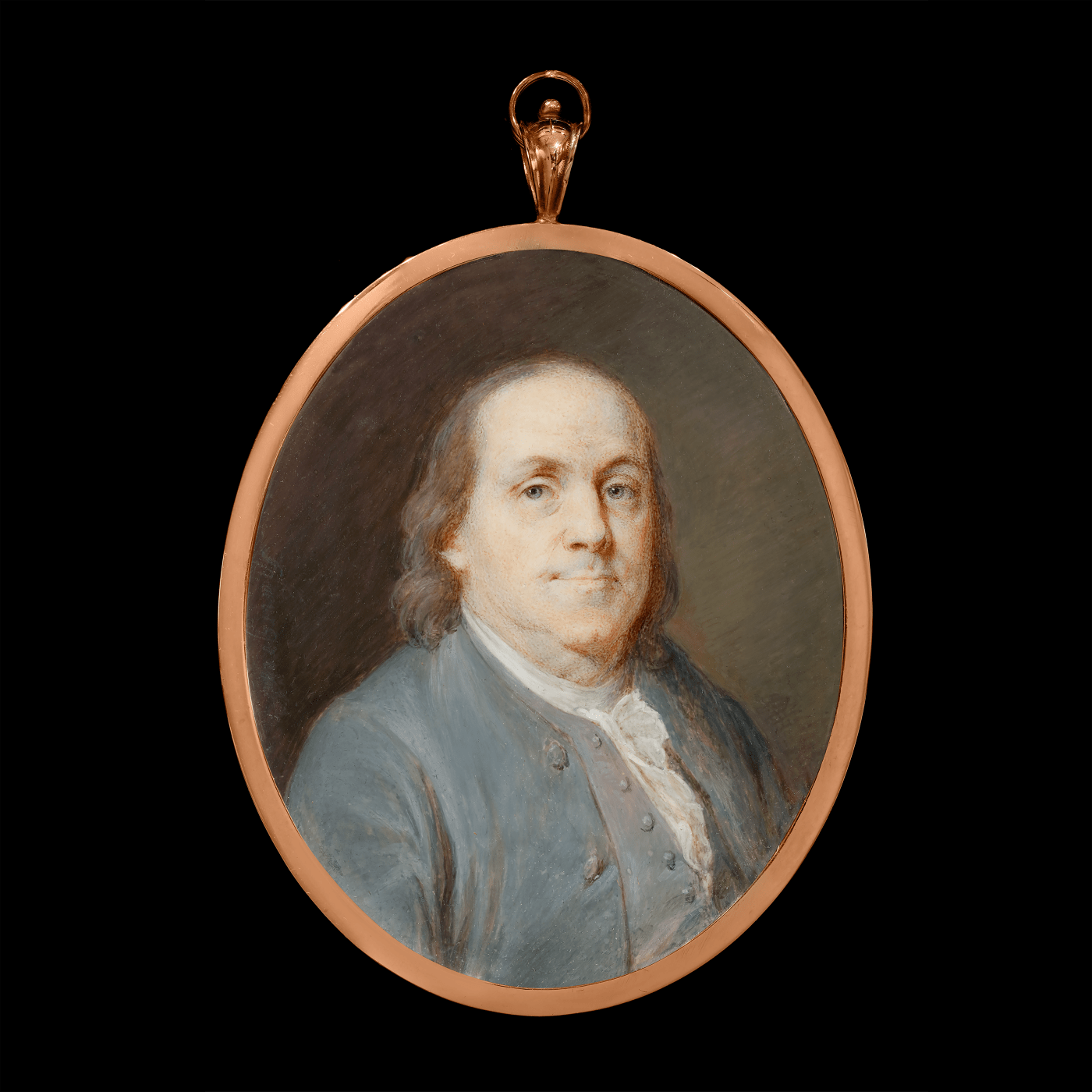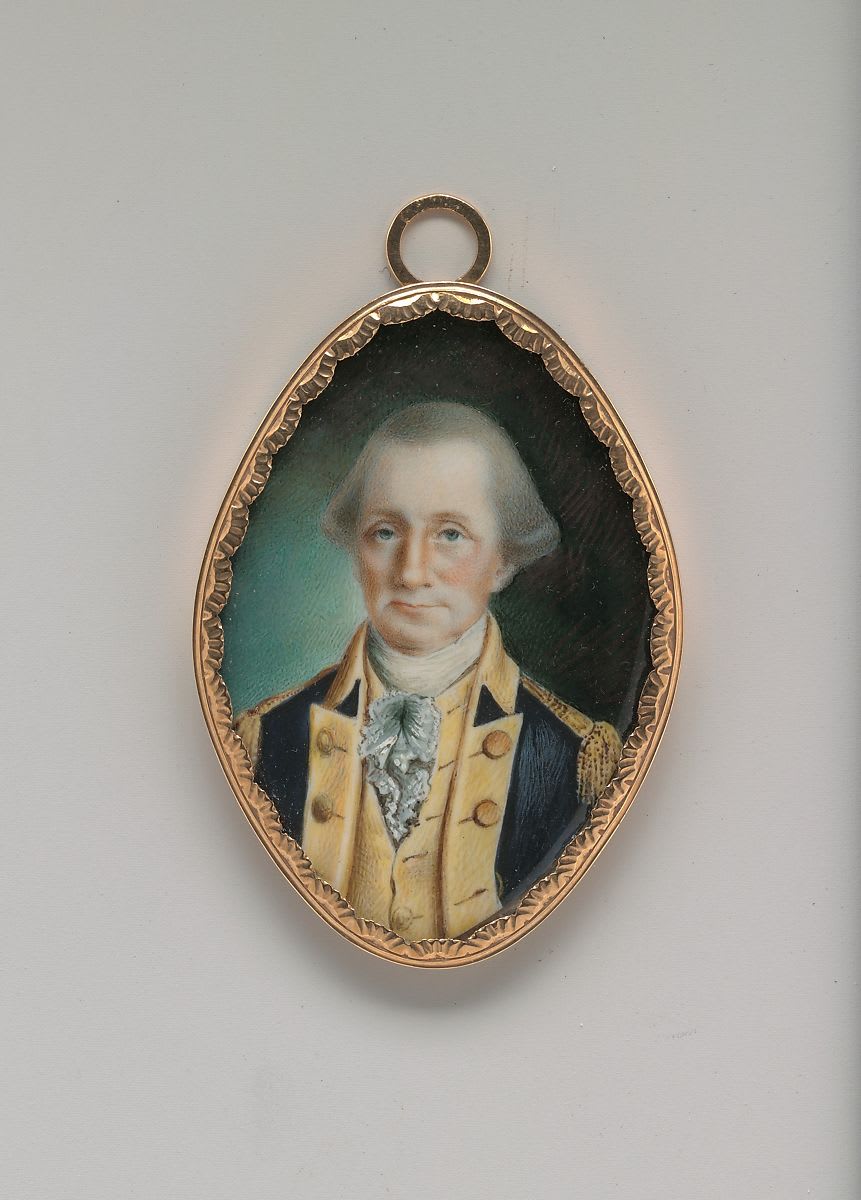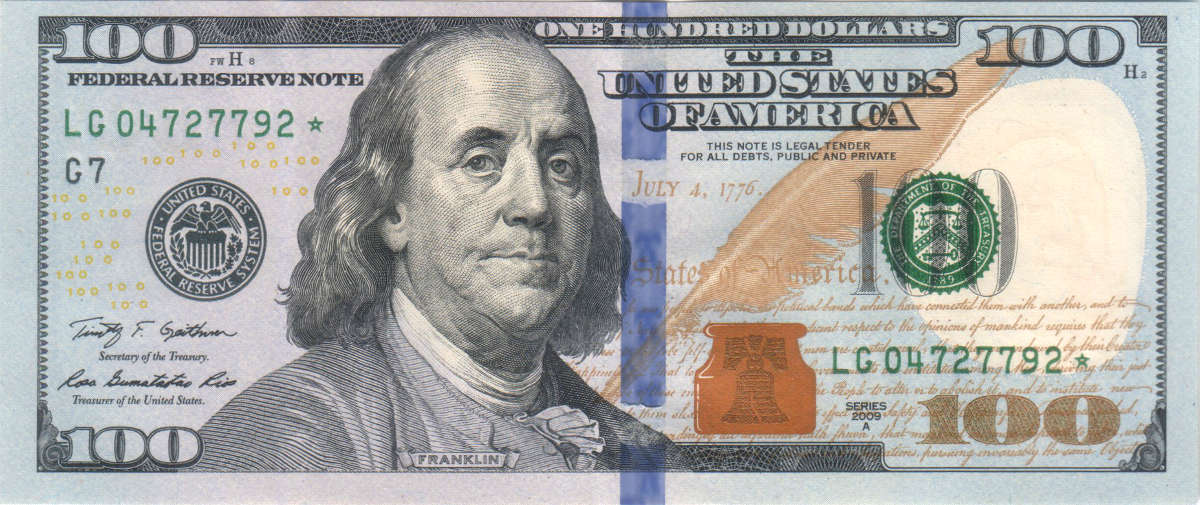Philip Mould & Company are committed to helping perceptive new collectors who maybe looking to start a collection, or expand an existing collection into new realms and genres. This considered collection combines a curated selection of Portrait Miniatures by top tier miniaturists with Modern British works on paper by innovative Modern Masters.
This month Portrait Miniatures Consultant, Emma Rutherford, shares her new additions to the New Collectors collection.
Portrait Miniatures
Iconic Americans
The two portrait miniatures in the spotlight here are very different types of representations of statesmen, both central figures in the history of the United States. Throughout the course of the eighteenth century, many portrait miniatures travelled from Europe with families settling in the US; as did, on occasion, the artists who painted them. The most successful artists in the final decades of this period were mainly those born and trained in England or Ireland, including Dublin-born John Ramage (c.1748-1802) who painted George Washington (1732-1799). Demand for miniatures was high enough for artists to set up studios and take on apprentices, which in the early nineteenth century resulted in the evolution of a 'uniquely American' style as artists collaborated in the artistic capital of New York.[1]
Culturally, just as in England, portrait miniatures were central in the mourning process in late eighteenth and nineteenth century America. Before the invention of affordable photographs, the image of a loved one was preserved in a miniature, usually considered the most private and cherished of portraits.[2] Adapted from a sketch by Gilbert Stuart (1755-1828), later worked up by Thomas Sully (1783-1872) [fig.2], this tiny portrait of Washington was likely commissioned by its original owner as part of the outpouring of grief that followed the death of the great statesman in 1799 [fig.3].
In the two decades prior to the American Revolution, it was Benjamin Franklin who was the world’s most famous American. In contrast to the portrait of Washington, this portrait of Franklin by the Swedish artist Lorentz Sparrgren was painted during the sitter’s lifetime, in January 1786 [fig. 4]. Like the Washington miniature, Sparrgren has relied on an earlier portrait for his version [fig. 5].
The original portraits of Franklin by the French artist Joseph-Siffred Duplessis (taken in Paris) followed the ‘warts and all’ school of portraiture and showed the colonial diplomat as a true ‘man of the people’, dressed simply and shown in a relaxed pose. The resulting image has become one of the touchstones of modern political portraiture (and the current ‘face’ of America’s hundred-dollar bill) [Fig.6]. Franklin himself was aware of how recognisable he was, as he commented to his daughter, Sally Bache: “The numbers sold are incredible. These, with the pictures, busts, and prints (of which copies upon copies are spread everywhere), have made your father’s face as well-known as that of the moon”.[3]
The widely disseminated portrait of Franklin clearly reached Sweden in the 1780s, where Sparrgren was still under apprenticeship at the Stockholm Academy. In contrast to the enlightenment movement sweeping France and neighbouring countries, the Swedish king, Gustav III was busy undoing ‘The Age of Freedom’ that had preceded his rule. His politics were unstable, and in the mid 1780s he put into effect social reforms that belonged to more to enlightened despotism than the enlightenment. Perhaps Sparrgren was commissioned to paint the portrait of Franklin by a disgruntled Swedish citizen, hoping that the independence granted to America, and the hoped-for liberation from Royal oppression in France, could soon be Sweden’s freedom too.
[1] E. Shushan describes this progression in ‘How America found its face: Portrait miniatures in the New Republic’, The Magazine Antiques, November 2012.
[2] For a full discussion of mourning miniatures in America see R. Jaffee Frank, Love and Loss: American Portrait and Mourning Miniatures, New Haven, Yale, 2000.
[3] W. Isaacson, Benjamin Franklin: An American Life, New York 2003, p. 327.








